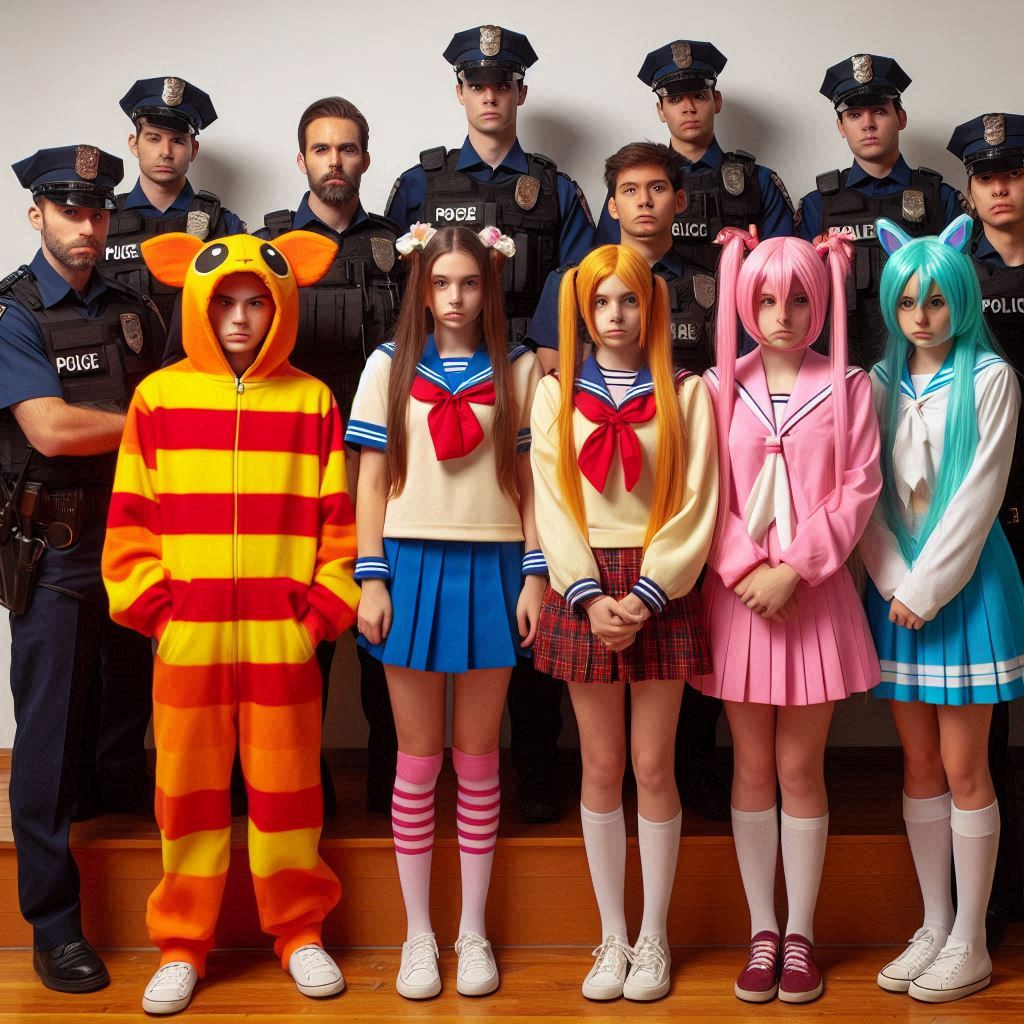This article is also available in:
Русский (Russian)
Incident in Tashkent, involving the detention of cosplay enthusiasts, raises many questions and sparks a great deal of outrage. Following a call from an unknown individual, law enforcement officers detained teenagers who had come to the opening of a new store specializing in anime merchandise. These kids were dressed as their favorite anime characters—typical cosplay, which is one of the most popular youth subcultures worldwide. But it seems someone in Tashkent decided that cosplay is something frightening and suspicious.
It all started when someone saw a crowd of brightly dressed teenagers and decided it wasn’t just fun but… LGBT propaganda. Seeing a threat in this harmless gathering, the person called the police. As a result, officers arrived on the scene, took the teenagers away, and brought them to the local station for questioning.
The reason for this treatment of the children turned out to be not only the large crowd gathered in the mall but also the “dangerous” plastic weapons that were part of their costumes—toy knives, axes, and swords. After the checks, all the children were released as nothing suspicious or illegal was found. But the situation left a lingering sense of unease.
Law Enforcement’s Reaction There are many questions for the police: why was there even a need to respond to such an absurd call? There is no law in Uzbekistan regarding LGBT, and checking children for orientation is something utterly incomprehensible and absurd.
How exactly was this check conducted, and on what grounds were the children detained? Is it really enough to simply make a ridiculous claim to trigger law enforcement intervention? Such actions raise concerns and serious questions about the competence of the police.
Another point—will this “vigilant citizen” who alerted the authorities be held accountable for a false alarm? After all, this is now a false report. Let the public see this hero who dislikes anime.
Worst of all, by loudly declaring that they were looking for LGBT, the police have now put these children at risk of bullying at school and in society since our community often doesn’t bother to find out the truth.
And finally, the plastic weapons that so scared the police—are they not concerned that pen-knives are openly sold in the country? Maybe it’s better to deal with that instead of targeting cosplayers.
Why Is This a Problem? First, treating youth subcultures as something suspicious and dangerous can seriously harm the development of youth initiatives and creative hobbies. Cosplay is a form of self-expression, a way for young people to be creative, find friends with shared interests, and immerse themselves in beloved culture. In a world where youth increasingly retreat into the virtual world, such gatherings are a chance for them to be part of a real community.
Second, incidents like this can create an atmosphere of fear and mistrust between young people and law enforcement. Detaining teenagers who were simply having fun and posed no threat might make them less likely to trust the police and authorities. Instead of feeling protected, they may start to see law enforcement as enemies, which will ultimately lead to even greater alienation.
Third, such actions undermine trust in the justice system and public order. Detaining children based on an unfounded call is an abuse of power and a disregard for real issues. It diverts law enforcement resources from actual threats and gives the impression that the system works against its citizens rather than for their protection.
Today’s incident should serve as a lesson for everyone. Cosplay is not a threat; it is an expression of creativity and freedom. Law enforcement must remember that their job is to protect, not to intimidate. Let’s respect the interests of the youth, support their desire for self-expression, and create a safe and friendly environment for all.
The text has been translated by AI. For more accurate information, please refer to the Russian version of the article.







